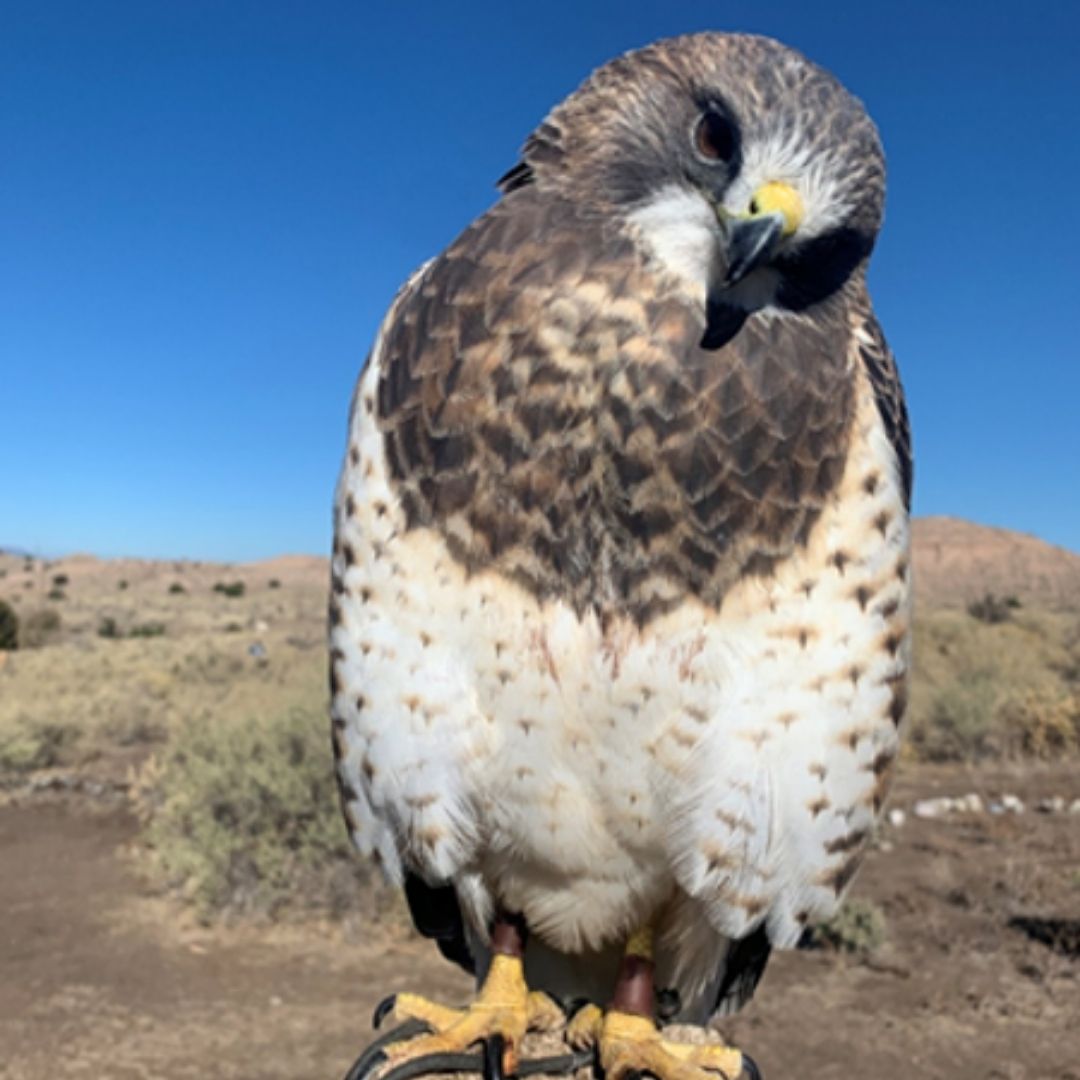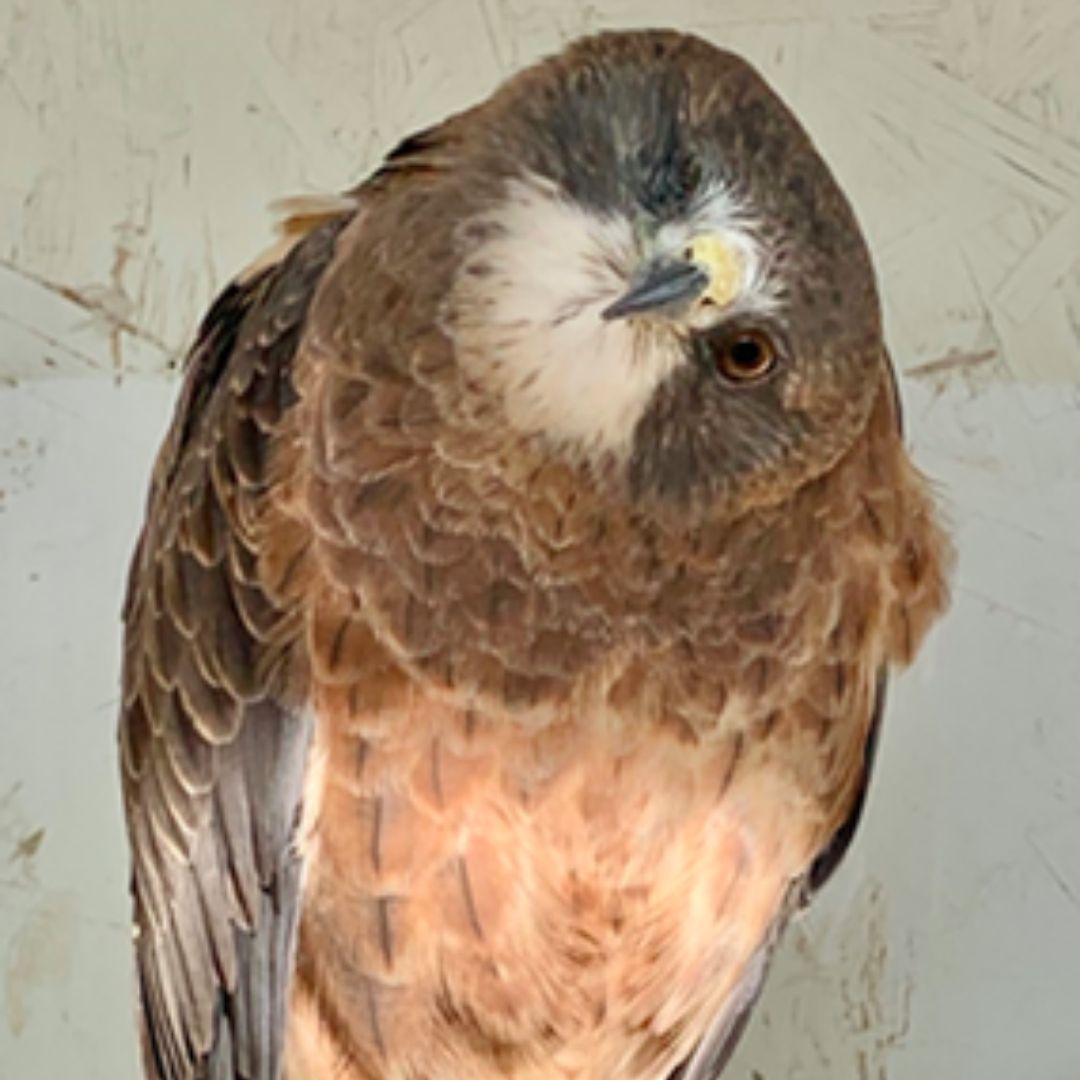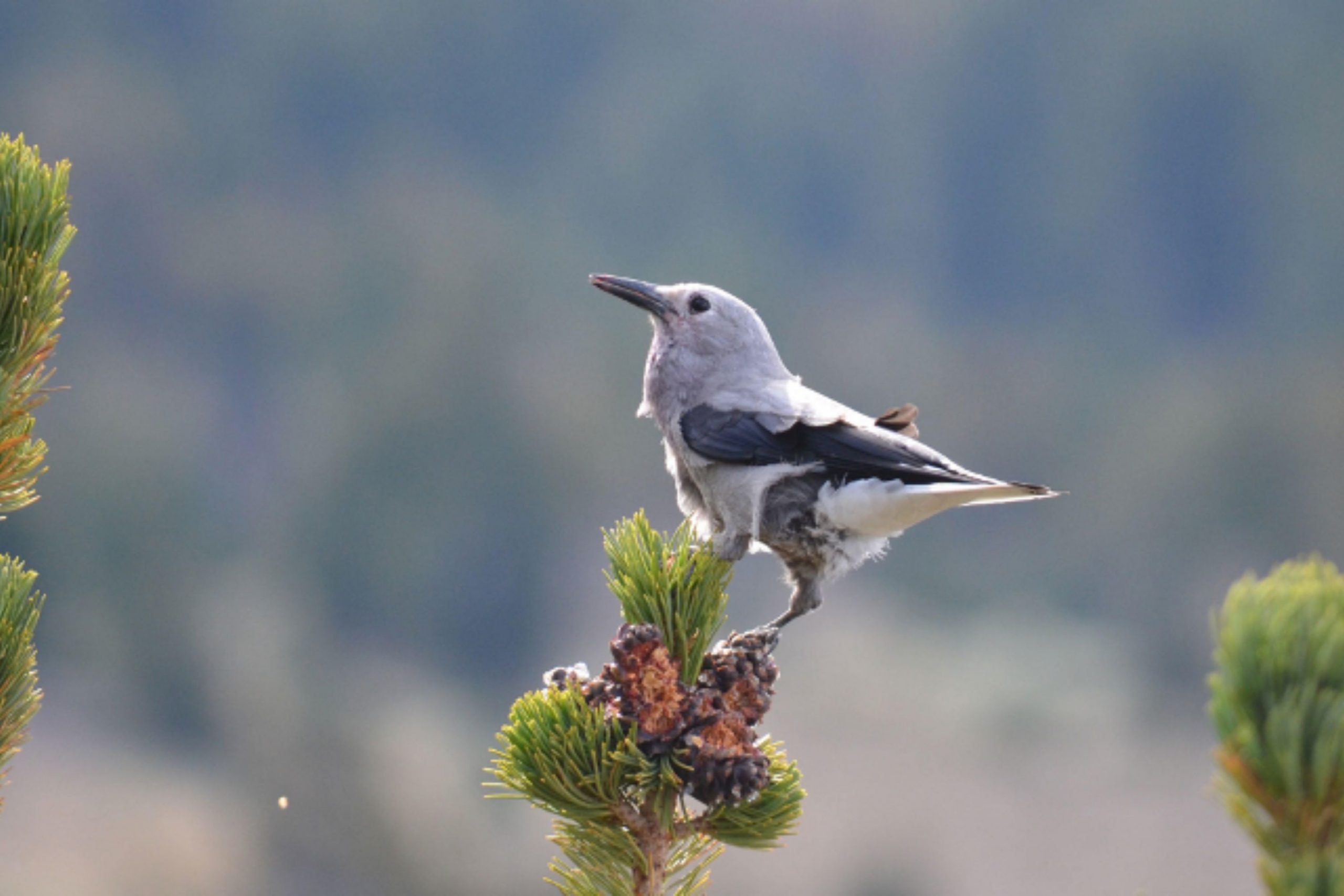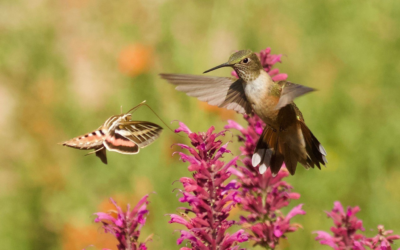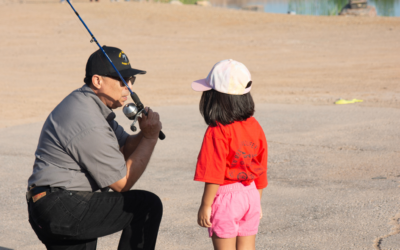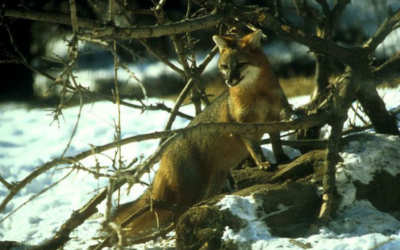Wildlife in Winter
New Mexico’s animals adapt in diverse ways when temperatures drop.
Winter is finally here in New Mexico! The leaves have gone through their color changes and moved into their more dormant winter state. There’s a chill in the air, and we humans have hauled out our winter gear. We are often asked at New Mexico Wildlife Center what animals do in the winter — and more importantly, where do they all go?
Many of us are used to seeing, even in urban and suburban environments, the bustle of life outdoors in warmer seasons: birds singing, lizards sunning themselves on rocks, squirrels rummaging about in search of food. In the winter, however, life continues on, albeit slower and slightly modified. Mammals, reptiles and birds each handle the changes in seasons differently.
The name of the game during these cold months is to conserve energy. Many animals do this by falling into a state of dormancy. We certainly notice the mammal ambassadors at NMWC —Joni the Bobcat, Juniper the Gray Fox, Mesquite the Coyote and others — taking more naps!
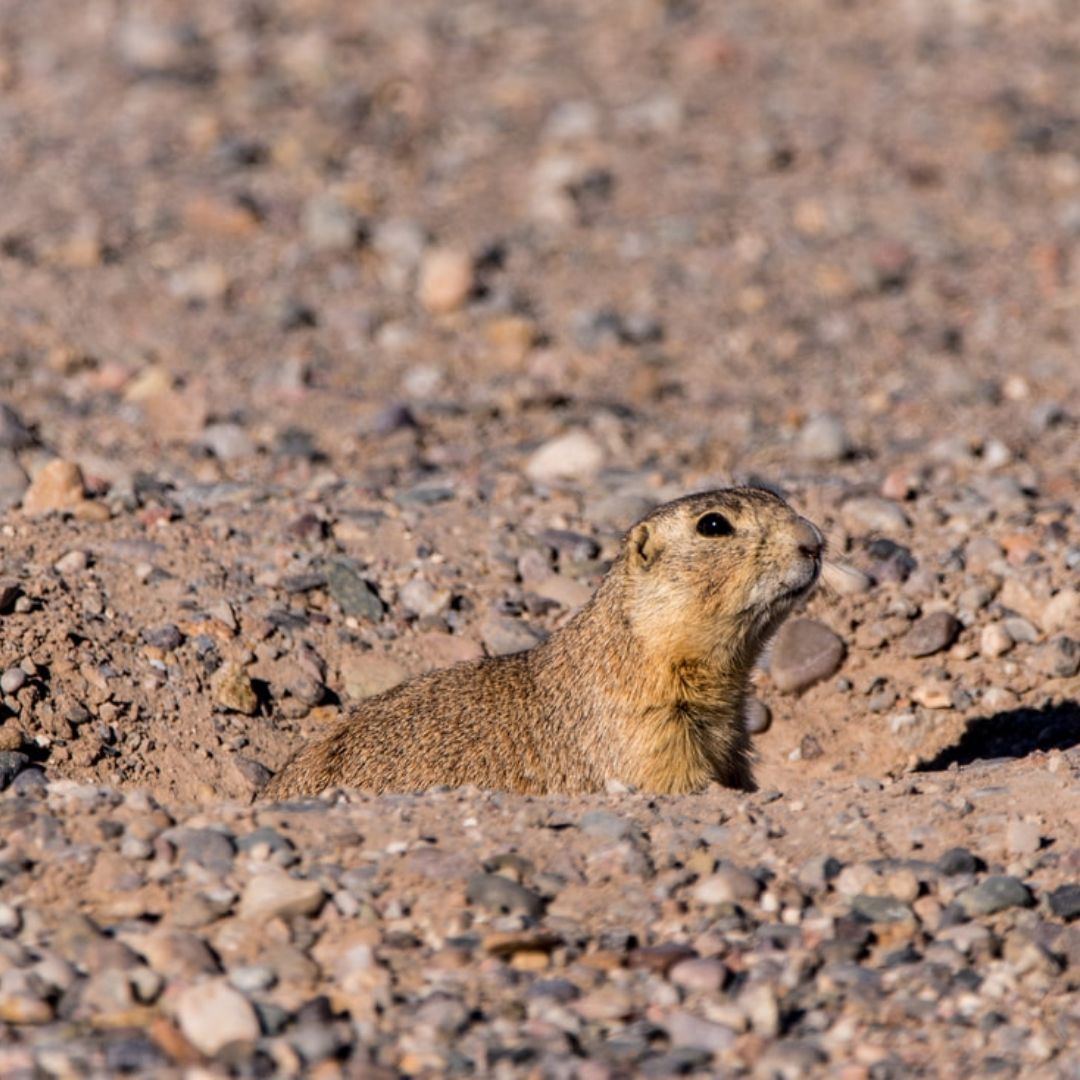
Smaller mammals in the wild, however, like bats and ground squirrels, will hibernate. Hibernation, in the case of these “obligate hibernators,” is largely spontaneous, not based on ambient temperature or access to food. These smaller animals will hunker down, and their metabolic processes go through big changes. Their body temperatures can drop to near ambient temperatures and, in some cases, all the way down into freezing temperature ranges. Heart and respiration rates will also drop significantly. This is why many of us notice a decrease in the number of small mammals scurrying about in our yards and through natural spaces — they get to zonk out all winter!
But what about bears? Don’t they hibernate, too? The answer is, kind of. While they do not go through the same drastic drop in body temperature, they do slow their metabolic rates significantly. Many scientists refer to it instead as a “deep sleep” or “torpor.” Unlike the smaller, “deep hibernators,” bears will awaken if disturbed, hence the term “don’t poke a sleeping bear.” During this deep sleep, bears will not eat or drink and will lose upwards of a third of their body weight.
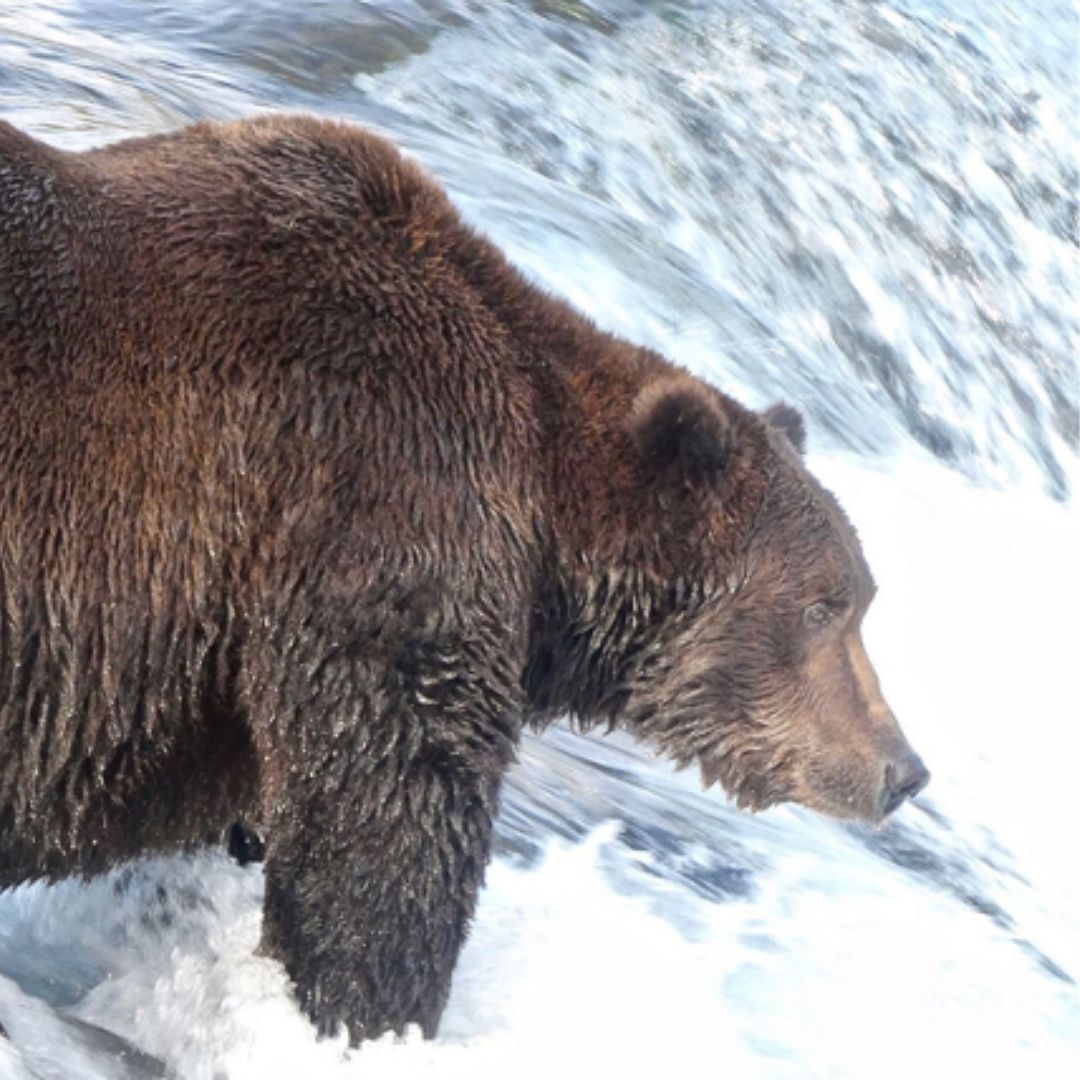
Due to the fact that these animals cannot actively slow down their metabolism in the same way that endotherms can, reptiles cannot hibernate. Instead, many species fall into a state of deep sleep called brumation. Animals like snakes, lizards and turtles will, similarly to mammals, find spots to hide out the winter and wait for spring to return. Due to their already low food needs, this is not as much of a stress on their bodies as it is for endothermic hibernators.
We have several reptiles that call NMWC home, including four snakes, three turtles and two salamanders. While all of them live indoors, we still notice them slowing down and having less interest in food even though they are in a temperature-controlled environment. The difference is that their states of lowered metabolism are caused by changes in lighting conditions.
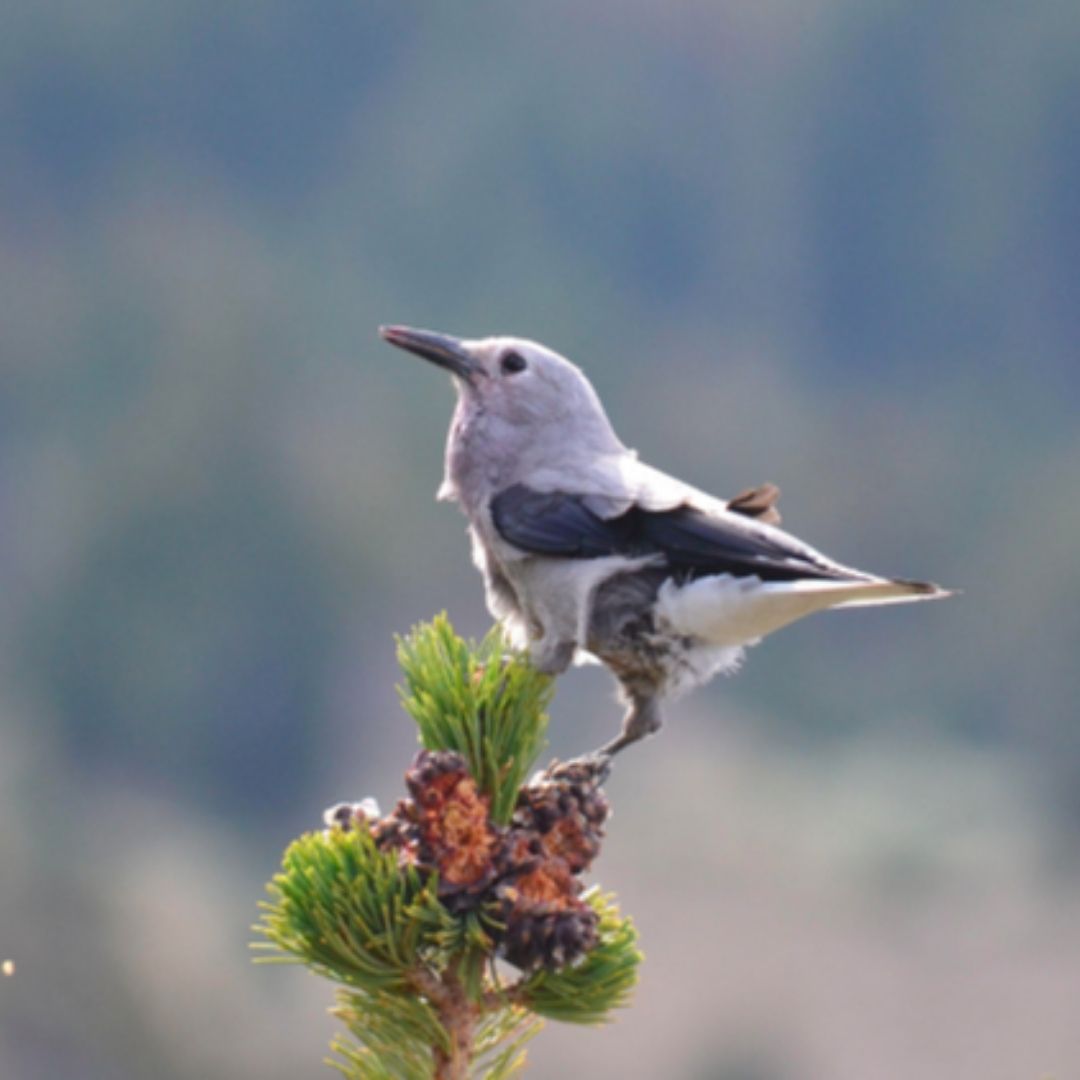
Birds also have ways to survive, and sometimes thrive, in these harsh conditions. While some do migrate, there are also several species that are winter residents of New Mexico because they have what it takes to survive. In the case of the Clark’s nutcracker, that is having an amazing memory.
More common in the northeastern part of the state, these birds are high-altitude specialists. Belonging to the family Corvidae, which also includes crows, ravens and magpies, these clever birds don’t bother flying thousands of miles. Instead, they store their favored food of pine nuts in caches throughout their territory. Depending on the season, a single Clark’s nutcracker can store over 90,000 seeds! This amazing bird can then remember, with surprising accuracy, where they have hundreds of caches and be set for the winter!
Obviously that number of seeds is an excess of what one bird would actually need but it acts as insurance by seed theft from other animals. While the bird’s memory may be good, it is in no way perfect, and those forgotten seeds can then germinate and grow more trees, creating the next generation.
Hundreds of thousands of birds that aren’t as well-suited for the winter as the Clark’s nutcracker migrate to warmer climates. Swainson’s hawks are some of the most migratory of North America’s hawks. Their fall migration takes them 6,000 miles down to South America. Then they return in the spring, for a roundtrip total of 12,000 miles! We have two Swainson’s hawk ambassadors that live at NMWC, named Cricket and Hopper, and at this time of year we see changes in both of their personalities. Namely, they want to eat everything!
